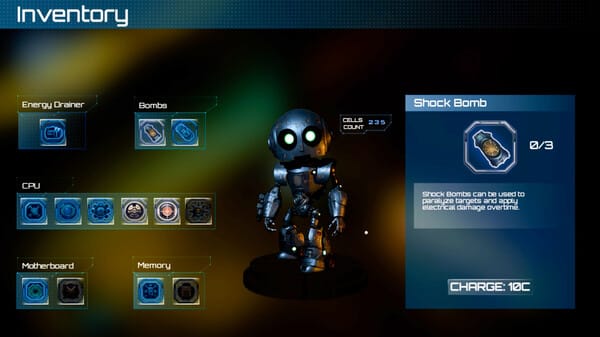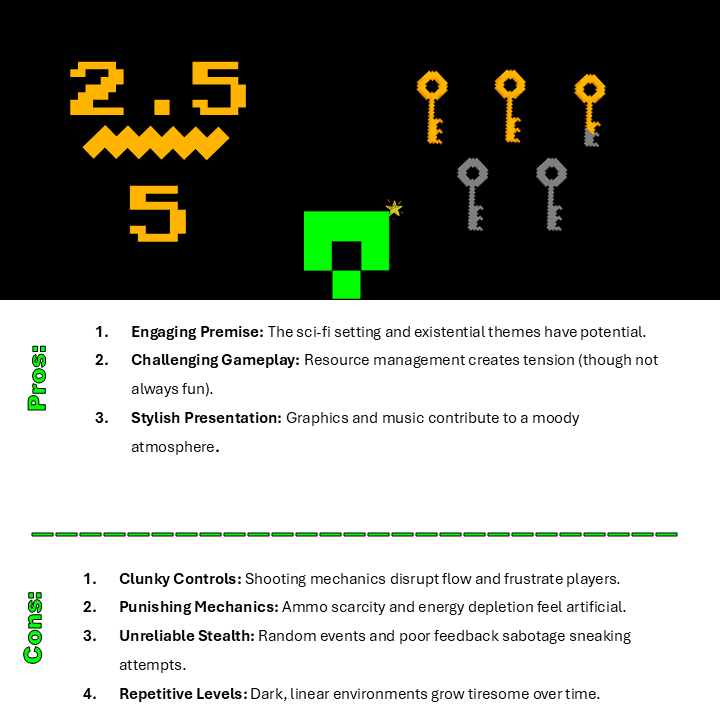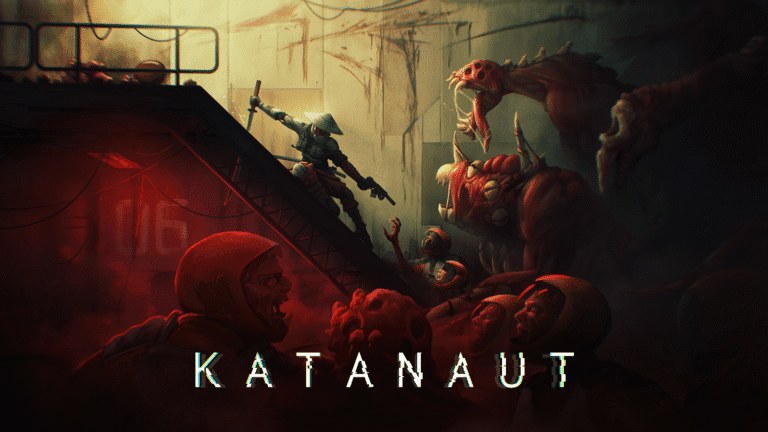
In the crowded world of indie video games, The Redundant attempts to carve out a niche for itself with an intriguing premise and ambitious mechanics—but ultimately falls short due to poor execution. At first glance, it promises a mix of action, stealth, and survival set within a mysterious, virus-ravaged facility. Unfortunately, what starts as a promising concept quickly devolves into a frustrating slog riddled with clunky controls, punishing mechanics, and questionable design choices. Is this game worth your time, or is it just another redundant entry in the oversaturated indie market? Let’s break it down.
What is The Redundant About?
You play as CF5, an abandoned robot tasked with isolating sections of a network before a rogue AI virus spreads further. The setup sounds compelling—a blend of System Shock ’s sci-fi intrigue and Hotline Miami ’s relentless combat—but the execution leaves much to be desired. The narrative unfolds through cryptic terminal logs and environmental storytelling, but these elements feel underdeveloped and disjointed. While the themes of obsolescence and redemption are interesting, they’re buried under layers of frustration caused by gameplay issues that overshadow any emotional payoff.
Story: A Muddled Mystery
The story tries to create tension and mystery, teasing players with fragmented lore about the virus and the facility’s downfall. However, the pacing is uneven, and key moments often feel anticlimactic. The lack of clear direction makes exploration tedious rather than rewarding, leaving you more confused than curious. For every satisfying revelation, there’s a stretch of aimless wandering that saps your enthusiasm. By the end, you may find yourself questioning whether the payoff was worth the grind.
Gameplay: A Series of Unpleasant Compromises
Combat: Punishing Over Precision
Combat in The Redundant revolves around managing limited ammunition and overheating weapons, which sounds like a recipe for strategic depth. In practice, however, it feels unnecessarily punitive. Ammo scarcity forces you to rely on stealth or risk running out entirely, but the stealth mechanics are so unreliable that even careful planning can lead to failure. Explosive spiders spawning at random ruin any semblance of strategy, turning tense encounters into chaotic scrambles for survival.
Energy Management: An Artificial Barrier
CF5’s energy system adds another layer of frustration. Every movement drains battery life, and sprinting consumes significantly more. Running out of juice results in instant death, forcing you to move cautiously even when speed is essential. Batteries scattered throughout levels offer some relief, but their placement often feels arbitrary, leaving you stranded when you need them most.
Stealth and Exploration: Clunky and Confusing
Stealth is supposed to provide a viable alternative to direct combat, but the lack of visual cues for enemy awareness makes it nearly impossible to execute effectively. Elevators serve as temporary respites from relentless enemies, but relying on them feels like exploiting a loophole rather than engaging with the intended gameplay loop. The absence of a map compounds the problem, making navigation unnecessarily tedious.
Who Is It For?
The Redundant might appeal to masochistic gamers who enjoy punishing difficulty for its own sake. Fans of slow-burn sci-fi narratives may also appreciate the effort put into world-building, though they’ll need patience to endure the gameplay hurdles. Casual players and those seeking polished experiences should steer clear—this game offers little reward for the frustration it dishes out.
Final Verdict: A Game That Shoots Itself in the Foot
While The Redundant shows glimpses of brilliance, its myriad flaws prevent it from reaching its full potential. Poorly implemented mechanics, inconsistent pacing, and frustrating design choices overshadow the game’s strengths.
[This review is based on a press build of the game provided by the publisher. The Game has been reviewed on PC Platform]




